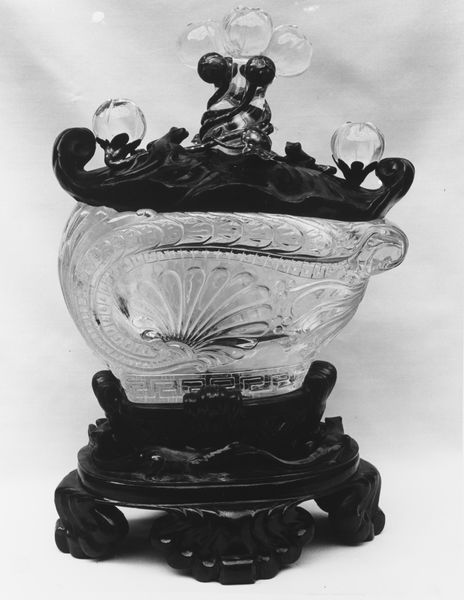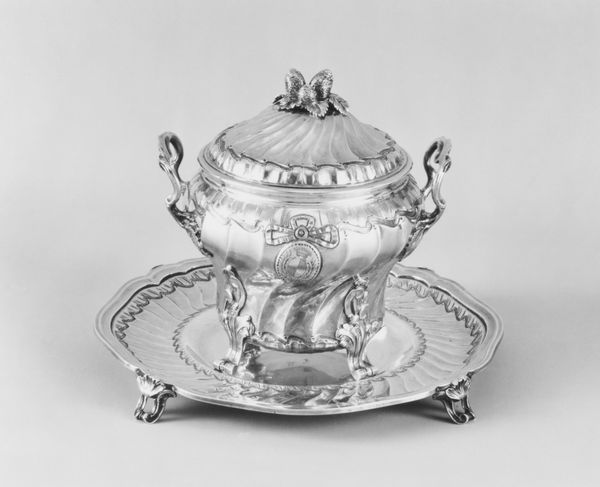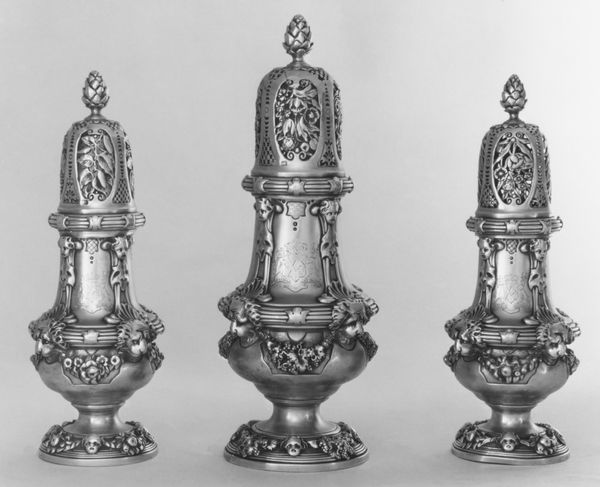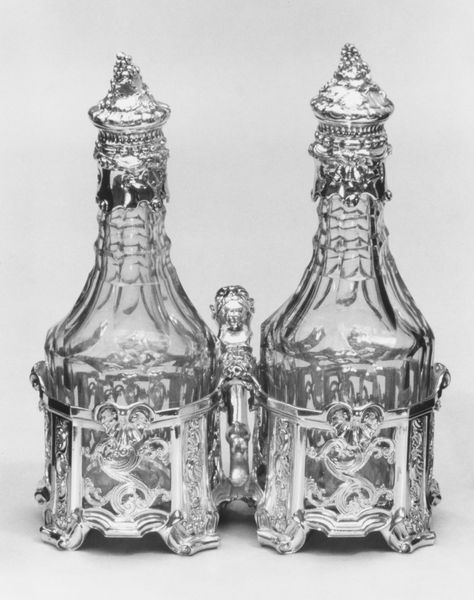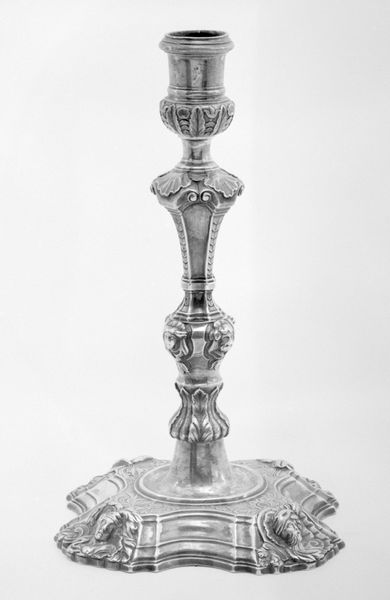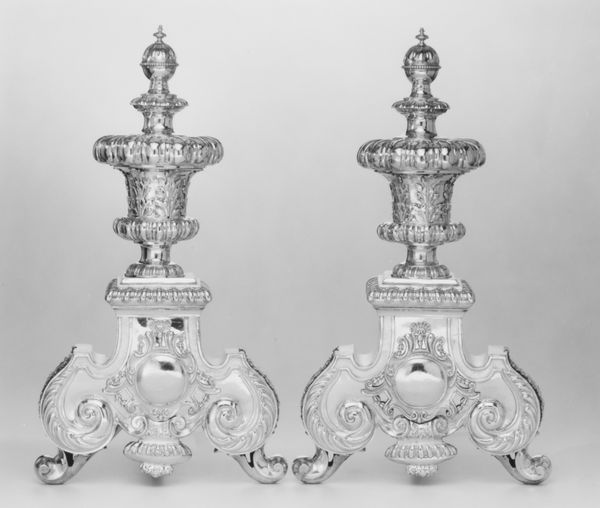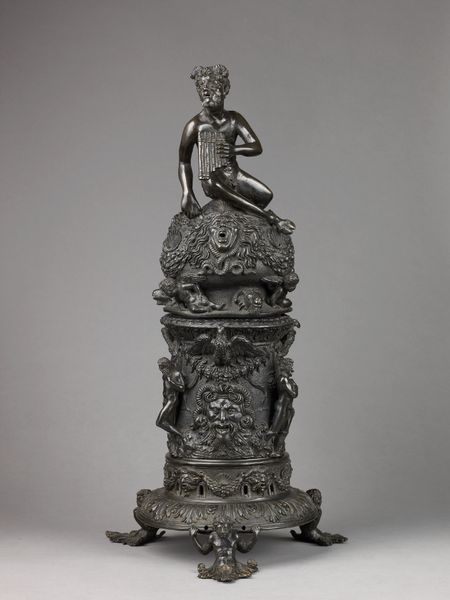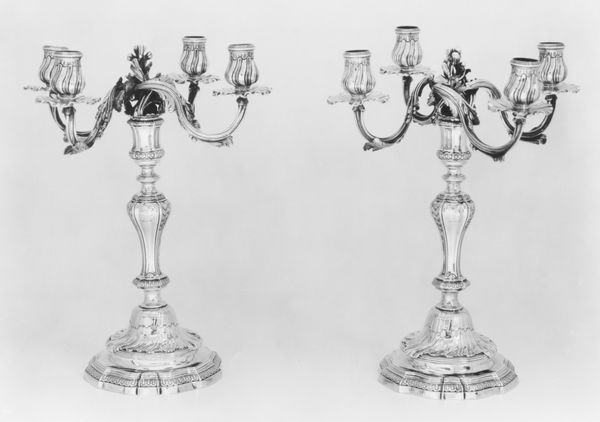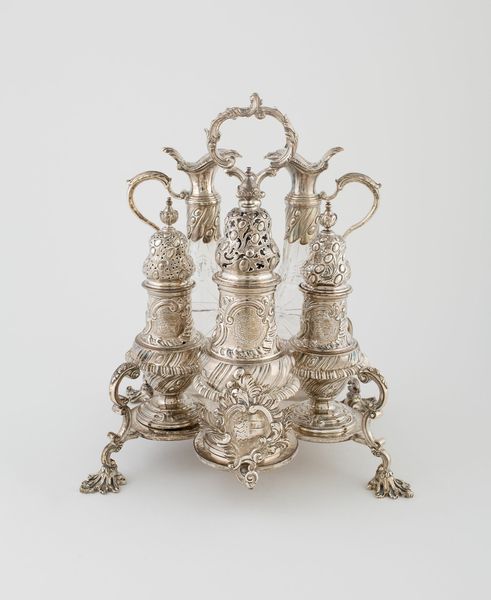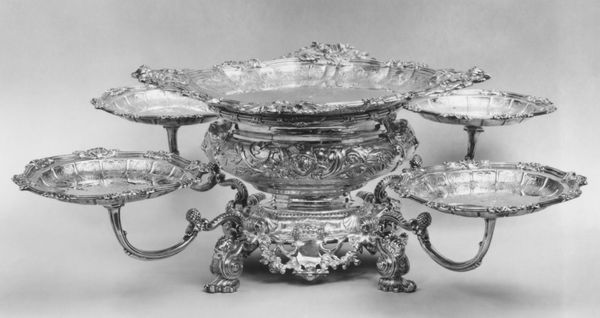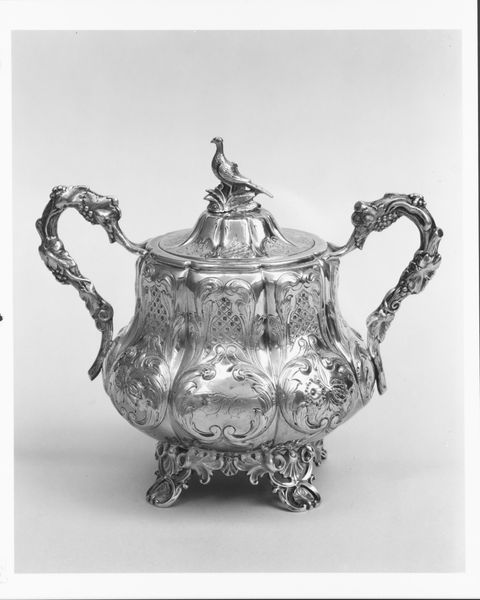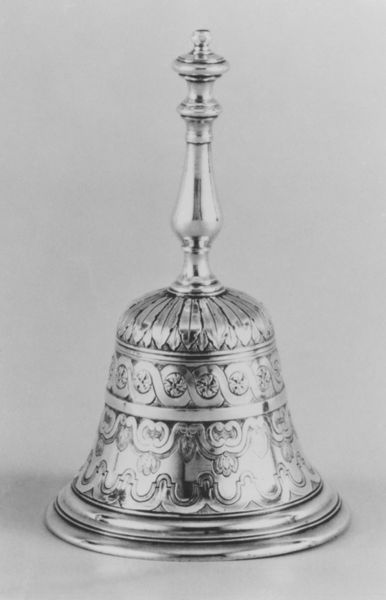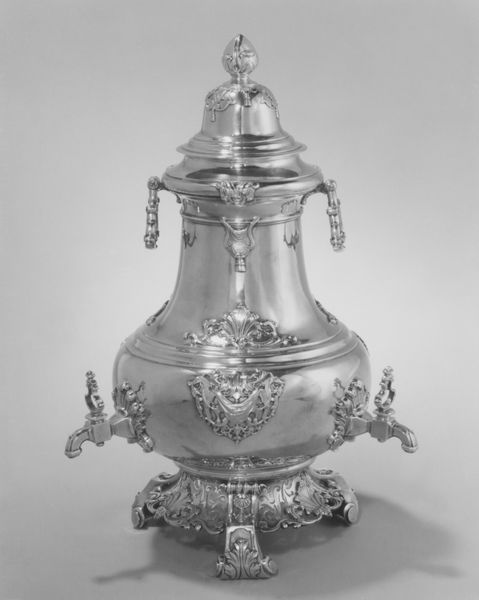
Warwick cruet stand with three casters and two bottles 1762 - 1763
0:00
0:00
Dimensions: Height (.6a, b): 12 3/4 in. (32.4 cm); Overall (.7a, b): 7 5/8 × 2 in. (19.4 × 5.1 cm); Overall (.8a, b): 9 1/2 × 2 1/2 in. (24.1 × 6.4 cm); Overall (.9a, b): 7 3/4 × 2 1/16 in. (19.7 × 5.2 cm); Overall (.10a, b): 8 1/2 × 2 1/2 in. (21.6 × 6.4 cm); Overall (.11a, b): 8 3/4 × 2 1/2 in. (22.2 × 6.4 cm)
Copyright: Public Domain
Robert Peaston created this Warwick cruet stand with three casters and two bottles in the second half of the 18th century. Cruet stands like this one reflect the elaborate dining rituals of the British upper classes. They are emblems of conspicuous consumption in a rapidly industrializing society. Silver, of course, signalled wealth, but the design is especially telling, the Warwick vase, itself derived from ancient Roman forms, was a popular motif for asserting aristocratic status. Consider the era: this was the time of the Enlightenment, but also the height of British colonialism and the slave trade. These decorative arts objects were supported by colonial exploitation and the labour of enslaved peoples. When we look at something like this cruet, we might think about the social conditions that made such luxury possible. To understand this cruet stand fully, we can look to trade records, probate inventories, and other archival sources that reveal the economic and social context of its creation. The role of the art historian is to bring these hidden histories to light.
Comments
No comments
Be the first to comment and join the conversation on the ultimate creative platform.
